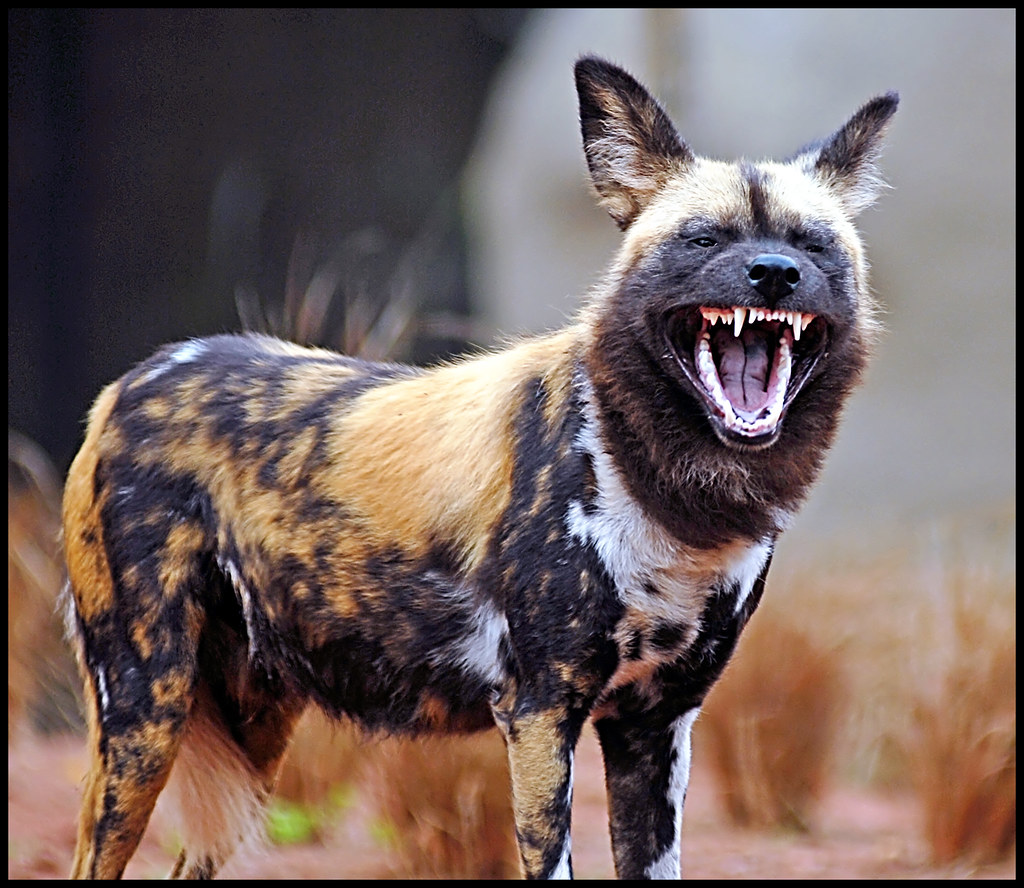
Those who wanted dogs for herding bred nippers who inflicted just enough of a bite to keep reluctant sheep moving, but not enough to harm them. When people wanted dogs to retrieve but not crush fragile birds and other game, they bred velvet-mouthed animals who would hold gently rather than clamp the game. Some people naturally found little dogs who sat in their laps and licked them more worthy of breeding than those who bit them. However domestic breeding also comes into play.
#WILD DOGS TEETH FULL#
Whereas too hard a bite to another dog could result in discipline from a superior or loss of a playmate or mate, not hanging on to prey firmly enough could cost a hungry dog a meal.įrom this we can see that domestic dogs come prepackaged with the potential for a full spectrum of wild dog mouthiness.

This latest addition involves the development of more powerful holds to which any resistance causes the animal to bite harder rather than let go. Mastering these gentler mouthy behaviors later enables adult animals to carry objects (including their own pups), play, and mate without harming the individuals of their attention.īecause adult teeth enable the dog to hold and kill prey, then to tear, chew, and grind it up, their emergence signals another addition to the puppy’s mouthy repertoire. Instead of sucking, they pick things up and carry them around, chew on their mothers’ ears and tails, jump on their litter mates and grab them by the neck.
#WILD DOGS TEETH PLUS#
Toothless puppy gums also pose less of a threat to delicate nipples, a real plus because infected nipples can lead to infected milk glands (mastitis) and undermine the health of both the mother and the pup.Īs their baby teeth grow in and mature, pups make the transition from milk to solid food and experience the behavioral changes that go with that. A lack of teeth makes it easier for the pup to create the vacuum necessary to draw milk from the mother’s breast.

Like wild dogs, domestic dogs initially get nourishment from their mothers in the form of milk, and toothless sucking at this stage confers two advantages. Add how the dog’s relationship with the owner and environment also may affect how these play out in a particular setting, and we can appreciate how deep and complex the roots of Duffy’s chewing could be! Moreover in the average pet those behaviors comprise a composite of wild, domestic, breed, and individual characteristics. For the sake of convenience, we can view chewing behavior in dogs as part of a continuum that includes sucking and licking at one end and biting, tearing, and chewing at the other.Īlthough we typically think of canine teething as the process whereby adult teeth replace deciduous (baby) ones by about six months of age, pups experience continual mouth-related behavioral changes from their toothless birth until they reach full adulthood. However we do know that many mental as well as physiological factors come into play. Sometimes he wears such an unusual look on his face when he chews, I can’t help wondering what’s going through his mind.Įven though all animals must eat to survive, we know surprisingly little about mouth-related behaviors. He chews a variety of toys and even some gum my son once dropped on the floor, but he’s not destructive. My dog Duffy seems to enjoy chewing, just for the sake of chewing. (Originally written for DogWatch, a newsletter for the general public from the Cornell University College of Veterinary Medicine)


 0 kommentar(er)
0 kommentar(er)
